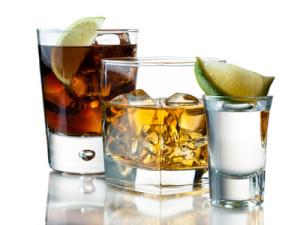
Contributor: Staff of Timberline Knolls Residential Treatment Center
Going off to college can provide a sense of starting a new chapter in life, a feeling of freedom from parents, a chance to explore the real world, and beginning to make decisions for oneself. After the stress of choosing the right college, enrolling in classes and picking out the perfect dormitory decorations, then comes the discomfort of meeting new people. College women and alcohol abuse often go together with these stressors.
Socially Involved
College offers the ability to become more social, such as joining a sorority, club, or team. Social events are usually centered around alcohol and partying, or blowing off steam with the aid of alcohol.
These activities can lead to binge drinking, drinking large amounts of alcohol in a short period of time. Binge drinking may occur on the weekends and lead to other nights of the week.
Measurements Matter
 The bullet points below depict the correct ounces per beverage:
The bullet points below depict the correct ounces per beverage:
- 12 fluid ounces of regular beer is about 5% alcohol
- 8-9 fluid ounces of malt liquor is about 7% alcohol
- 5 fluid ounces of wine is about 12% alcohol
- 1.5 fluid ounces shot of 80-proof distilled spirits is 40% alcohol
Citation: National Institute of Alcohol Abuse and Alcoholism
Legal Limit
All 50 states have a .080 blood alcohol concentration (BAC) as the legal limit for driving under the influence (DUI) or driving while impaired (DWI). The chart below shows the blood alcohol level after one hour of drinking, depending on the person’s body weight.
| # of drinks | 100 LBS | 120 LBS | 140 LBS | 160 LBS | 180 LBS | 200 LBS | 220 LBS | 240 LBS |
| 1 | .029 | .021 | .016 | .012 | .009 | .006 | .004 | .002 |
| 2 | .074 | .058 | .048 | .040 | .034 | .028 | .024 | .020 |
| 3 | .119 | .095 | .080 | .068 | .059 | .050 | .044 | .038 |
| 4 | .164 | .132 | .112 | .096 | .084 | .072 | .064 | .056 |
| 5 | .209 | .169 | .144 | .124 | .109 | .094 | .084 | .074 |
Citation: William R. Miller and Richard F. Munoz, University of New Mexico 1982 pp. 8-11
Women and Alcohol Lessons Learned
Unfortunately, there can be consequences that follow the events of consuming alcohol, such as, missing classes, performance on tests and papers, and even more serious, risky sexual behavior. It is essential when consuming alcohol to be conscious of who is handling your drink.

Rohypnol also known as “roofie” is a small white pill that has no taste or odor when slipped into a drink, often presented at bars, nightclubs, concerts, and parties.
The effects can lead to blackout with memory loss, dizziness, disorientation, nausea, and difficulty of movement and speaking.
Citation: drugfree.org
Key to Success for Women and Alcohol
Ultimately the decision is yours, when presented with the opportunity to consume alcohol, just remember – safety first! Be sure there is a responsible designated sober driver. Never leave your drink unattended, to prevent other substances from being slipped into your glass.
Know your limit, when enough is enough, to avoid facing sequences. It is okay to say “no” to peers who might pressure you into drinking alcohol when you do not wish to engage.
Don’t forget, college is the pathway to your future career and is bound to be an amazing experience to remember!
Thank you to Timberline Knolls for providing this article.
Timberline Knolls is a leading residential treatment center for women and adolescent girls, ages 12 and older, with eating disorders, substance abuse, trauma, mood and co-occurring disorders. Located in suburban Chicago, residents receive excellent clinical care from a highly trained professional staff on a picturesque 43-acre wooded campus. An adult partial hospitalization program (PHP) is also available in nearby Orland Park, Ill., for women to step down or direct admit. For more information on Timberline Knolls Residential Treatment Center, call 630-755-5173. We are also on Facebook – Timberline Knolls, LinkedIn – Timberline Knolls and Twitter – @TimberlineToday.
The opinions and views of our guest contributors are shared to provide a broad perspective of addictions. These are not necessarily the views of Addiction Hope, but an effort to offer a discussion of various issues by different concerned individuals.
We at Addiction Hope understand that addictions result from multiple physical, emotional, environmental, and genetic factors. If you or a loved one are suffering from an addiction, please know that there is hope for you, and seek immediate professional help.
Published on February 1, 2018
Reviewed and Updated by Jacquelyn Ekern, MS, LPC on January 12, 2021
Published on AddictionHope.com
